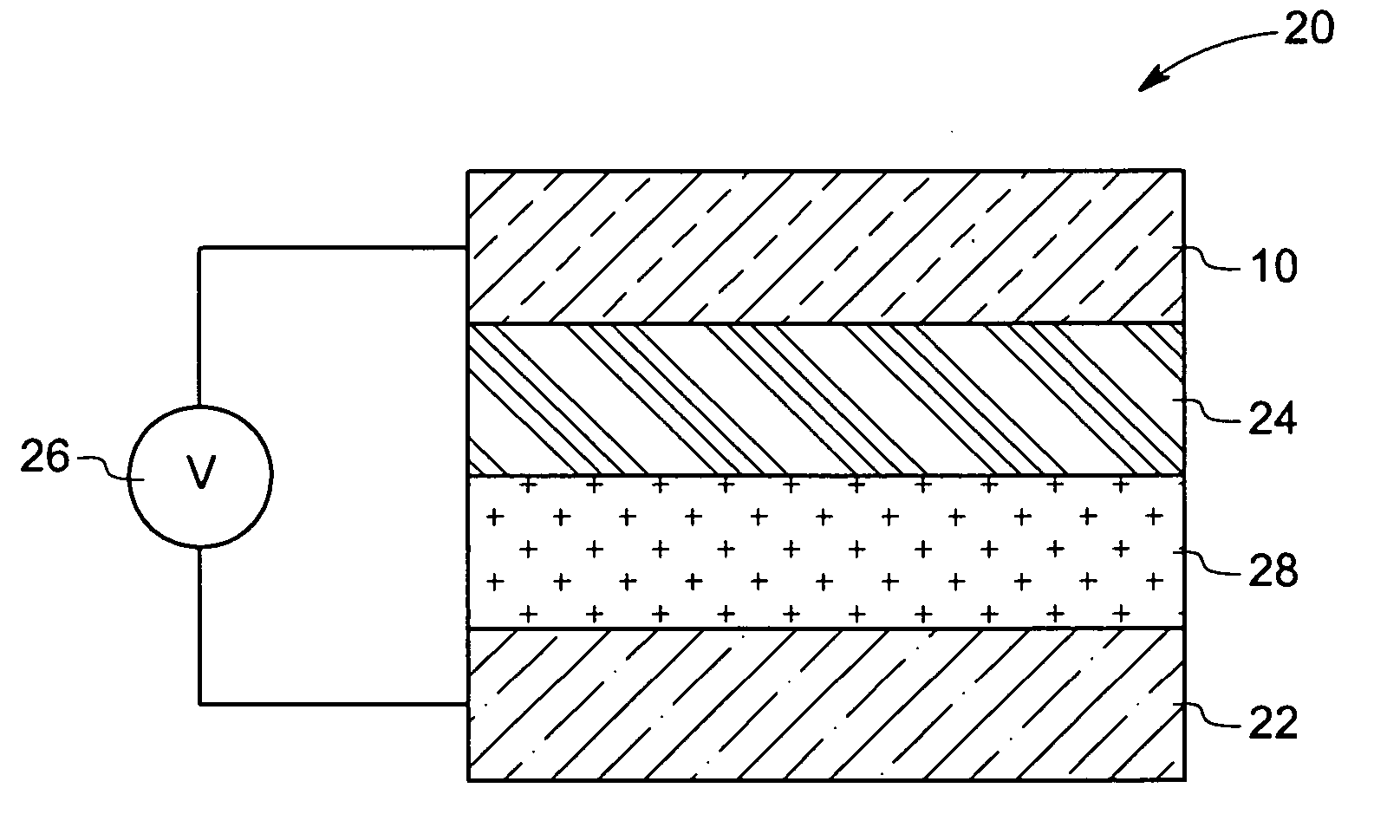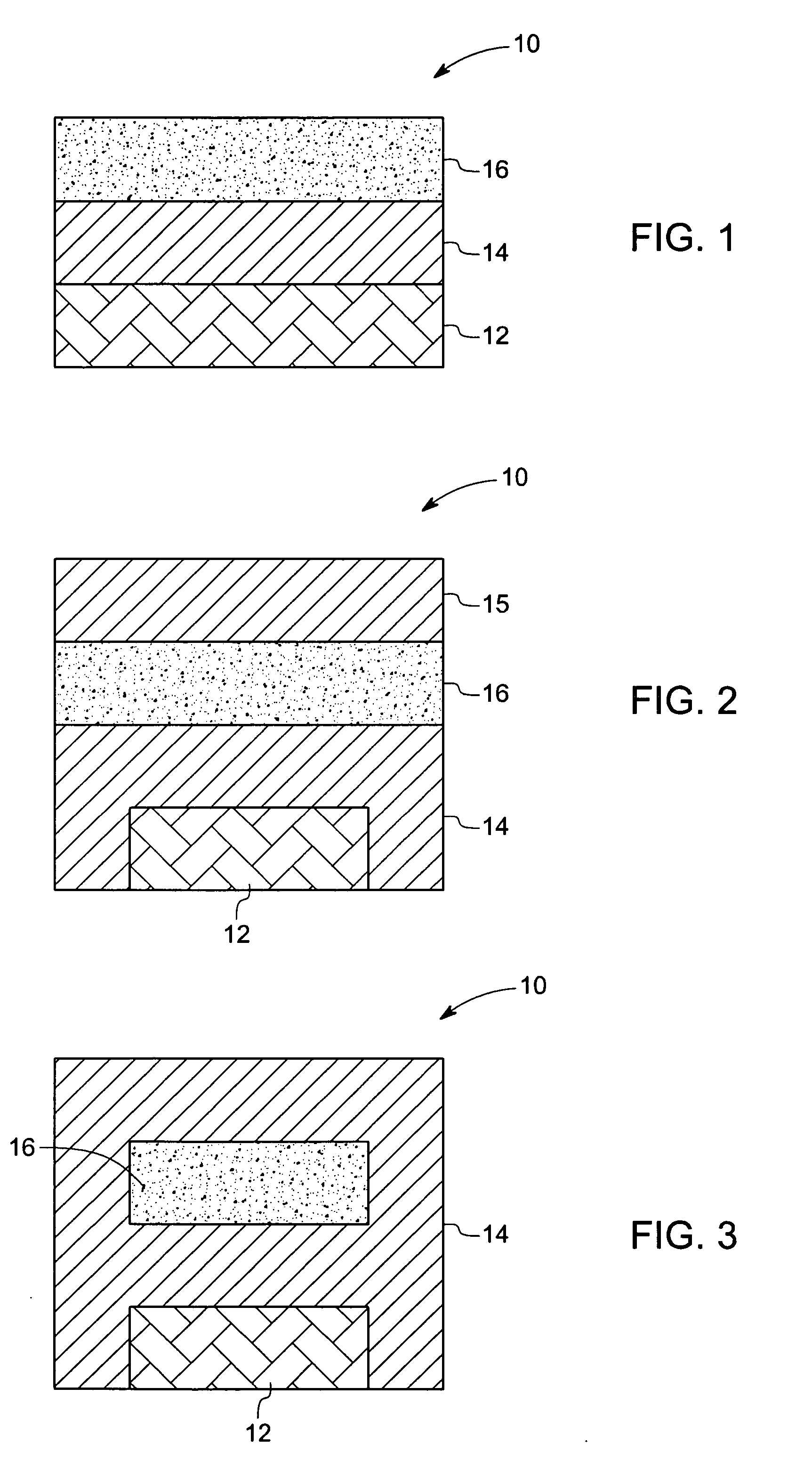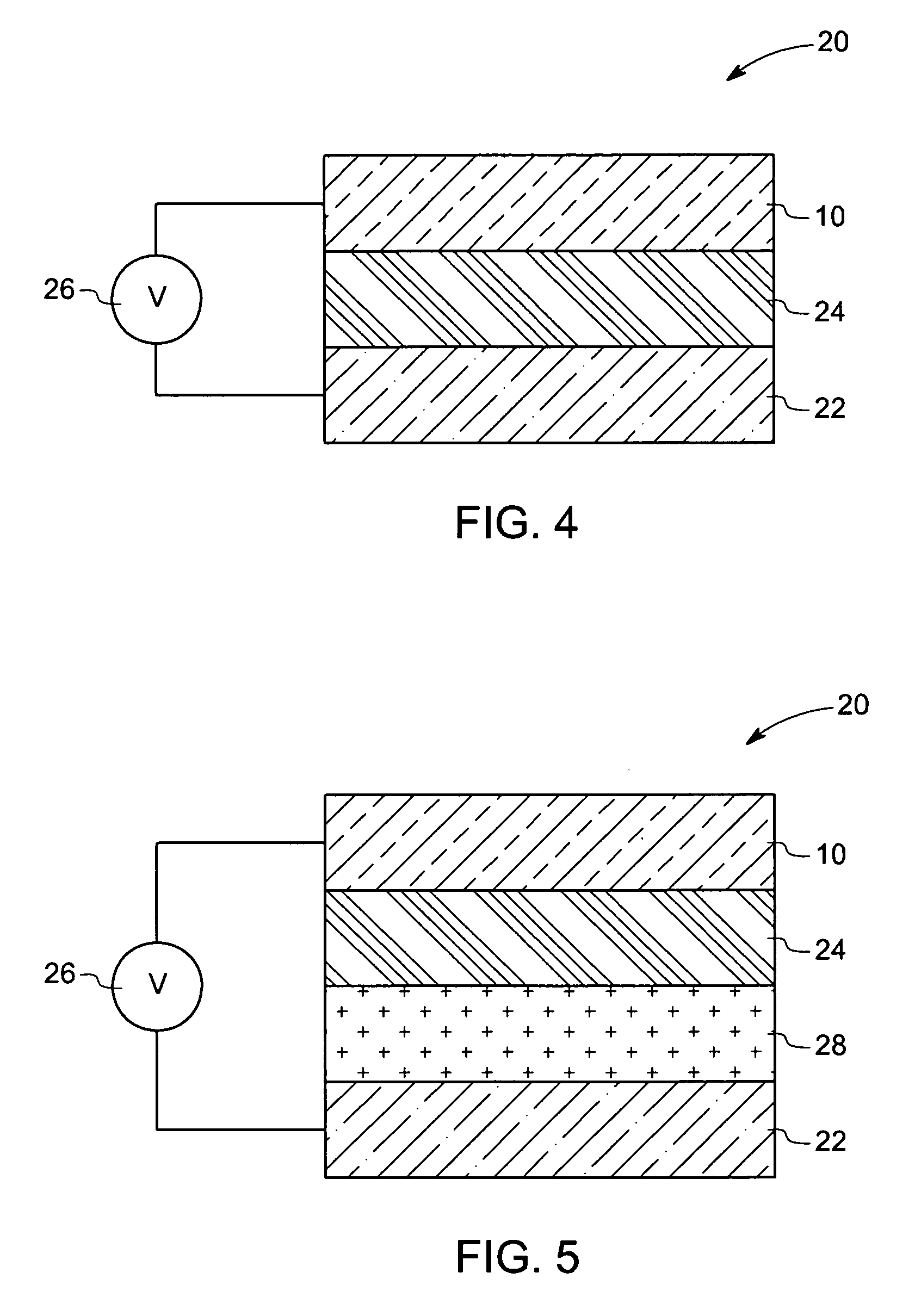Electrode stacks for electroactive devices and methods of fabricating the same
a technology of electroactive devices and electrode stacks, which is applied in the field of electroactive devices for organic electroactive devices, can solve the problems of prone to pin holes, deformation, and sensitive to moisture and oxygen, and achieve the effects of reducing production costs, improving product quality, and improving product quality
- Summary
- Abstract
- Description
- Claims
- Application Information
AI Technical Summary
Problems solved by technology
Method used
Image
Examples
example
[0059] Three organic light-emitting devices (OLEDs), samples A, B, and C, were fabricated as follows. Glass pre-coated with indium tin oxide (ITO) (Applied Films) was used as substrates for all three samples. The ITO substrates were ozone treated. A layer of poly (3,4-ethylendioxythiophene / polystyrene sulfonate (PEDOT) (Bayer Corporation) of thickness about 65 nm was deposited onto each of the three ultraviolet-ozone treated ITO substrates via spin-coating and then baked for about 1 hour at about 180° C. in air. A layer of a green light-emitting polymer (LEP) (Lumation 1304 obtained from Dow Chemicals) of thickness about 65 nm was then spin-coated on to the PEDOT layer of all three samples. The three samples were then transferred into an argon filled glovebox with less than about 1 part per million (ppm) of oxygen and moisture. A bilayer stack of NaF (about 4 nm thick ) / Al (about 100 nm thick) was thermally evaporated at a base vacuum of about 2×10−6 torr on top of the LEP layer of ...
PUM
| Property | Measurement | Unit |
|---|---|---|
| thickness | aaaaa | aaaaa |
| thickness | aaaaa | aaaaa |
| thickness | aaaaa | aaaaa |
Abstract
Description
Claims
Application Information
 Login to View More
Login to View More - R&D
- Intellectual Property
- Life Sciences
- Materials
- Tech Scout
- Unparalleled Data Quality
- Higher Quality Content
- 60% Fewer Hallucinations
Browse by: Latest US Patents, China's latest patents, Technical Efficacy Thesaurus, Application Domain, Technology Topic, Popular Technical Reports.
© 2025 PatSnap. All rights reserved.Legal|Privacy policy|Modern Slavery Act Transparency Statement|Sitemap|About US| Contact US: help@patsnap.com



